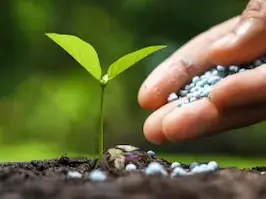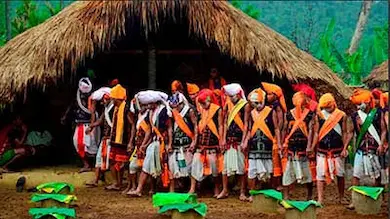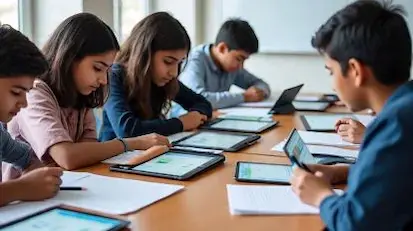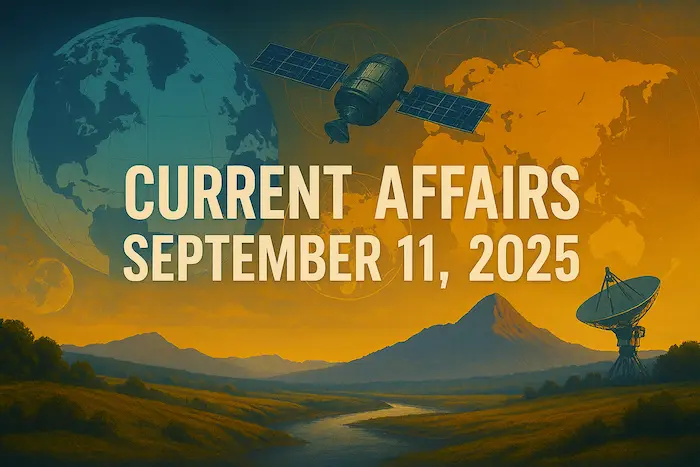1. India-EFTA Trade and Economic Partnership Agreement (TEPA): A Strategic Leap Forward – International Relations

Why in News?
India has signed the Trade and Economic Partnership Agreement (TEPA) with the European Free Trade Association (EFTA), comprising Switzerland, Norway, Iceland, and Liechtenstein.
This is India’s first comprehensive trade deal with advanced European economies, signaling a shift in India’s global trade diplomacy and a push toward deeper economic integration with developed countries.
Key Highlights of TEPA
Massive Investment & Job Creation
- EFTA countries commit to investing $100 billion over the next 15 years in India.
- Expected to create 1 million direct jobs in various sectors.
Trade Liberalization
- Tariffs eliminated or reduced on 92.2% of tariff lines.
- Covers 99.6% of India’s exports by value.
- Duty-free treatment extended to all non-agricultural goods.
Boost to Key Indian Sectors
- Beneficiaries: Textiles, gems & jewellery, organic chemicals, and industrial goods.
- Strengthens India’s export competitiveness in these domains.
Services & Strategic Sectoral Commitments
- Enhanced cooperation in services including:
- IT
- Finance
- Education
- Health services
Technology & Innovation Collaboration
- Leverages EFTA’s expertise in:
- Precision engineering
- Pharmaceuticals
- Renewable energy
- Helps build India’s technological self-reliance.
Support for Climate Goals
- TEPA aligns with India’s Net-Zero target by 2070.
- Provides access to European green finance and clean technology.
Nuclear Energy & Thorium Potential
- TEPA opens avenues for cooperation in thorium-based nuclear energy, where India has vast untapped reserves.
Significance for India
- Moves India closer to global value chains (GVCs).
- Reduces reliance on traditional trade partners.
- Enhances investor confidence in India’s economic policies.
- Strengthens India’s energy security and climate resilience.
- Opens up opportunities for technology transfer, skilled jobs, and green development.
Exam Connect – Possible Questions
Prelims
1. The European Free Trade Association (EFTA) includes which of the following countries?
1. Switzerland
2. Norway
3. Sweden
4. Iceland
Options:
A. 1, 2 and 3 only
B. 1, 2 and 4 only
C. 2, 3 and 4 only
D. All of the above
Answer: B. 1, 2 and 4 only
(Sweden is a part of the European Union, not EFTA)
2. Which of the following is/are correct regarding the India-EFTA TEPA?
1. It is India’s first trade agreement with any European country.
2. it includes investment commitments and cooperation on green energy.
Options:
A. Only 1
B. Only 2
C. Both 1 and 2
D. Neither 1 nor 2
Answer: B. Only 2
(It is the first comprehensive deal with advanced European economies, not the first overall.)
Mains
1. “The India-EFTA Trade and Economic Partnership Agreement (TEPA) reflects India’s evolving global trade strategy.” Critically examine the significance of TEPA for India’s economy, with a focus on technology, sustainability, and investment.
2. Discuss how the India-EFTA TEPA aligns with India’s climate goals and the prospects it opens for clean and sustainable energy development.
2. Regulation of Biostimulants in India: A Step Towards Scientific Agriculture – Science & Technology

Why in News?
India has formalized a comprehensive regulatory framework for biostimulants under the Fertilizer Control Order (FCO), 1985, placing it among the few countries with dedicated biostimulant legislation. This regulation is aimed at ensuring product efficacy, safety, and quality, safeguarding both farmers’ interests and environmental health.
Key Takeaway
What are Biostimulants?
- Substances or microorganisms that stimulate natural plant processes.
- Improve nutrient uptake, growth, crop quality, stress resistance, and yield.
- Not pesticides or plant growth regulators (which are regulated under the Insecticides Act, 1968).
Official Definition (Clause 20C, FCO 1985):
“Biostimulants are products containing substances or microorganisms, whose function is to stimulate natural processes of the plant to enhance/benefit nutrient uptake, nutrient efficiency, tolerance to abiotic stress, and crop quality.”
Types / Categories of Biostimulants:
- Botanical extracts (e.g. seaweed)
- Amino acids, protein hydrolysates, and vitamins
- Biochemicals and antioxidants
- Anti-transpirants
- Humic and fulvic acids
- Cell-free microbial products
- Live microorganisms (excluding biofertilizers and biopesticides)
Timeline of Regulation:
Pre-2021:
- Over 30,000 unregulated biostimulant products in the Indian market.
- No formal oversight or quality control.
February 2021:
- Biostimulants brought under the Fertilizer Control Order (FCO).
- Provisional registration (G3 certificates) introduced.
- ~8,000 products got temporary approval.
2023–2025 Reforms:
- Only 146 biostimulant products have been officially recognized (as of 2025).
- Provisional registration system discontinued.
- Key amendments:
- Inclusion of live microorganisms.
- Pesticide residue limit raised from 0.01 ppm to 1 ppm.
- Mandatory quality testing, labelling, safety compliance.
- Clear guidelines for Schedule VI recognition.
Significance of Regulation
| Area | Impact |
|---|---|
| Farmer Protection | Prevents sale of spurious or unverified products |
| Science-Based Agriculture | Encourages research and validation of indigenous biostimulants |
| Atmanirbhar Bharat | Promotes domestic innovation and self-reliance |
| Environment & Safety | Reduces unregulated chemical use, supports sustainable farming |
| Global Benchmarking | India joins elite group with specific legal framework for biostimulants |
Exam Connect – Possible Questions
Prelims
1. Which of the following statements about biostimulants is/are correct?
1.They are regulated under the Insecticides Act, 1968.
2.They include substances that stimulate natural plant processes like nutrient uptake and stress tolerance.
Options:
A. Only 1
B. Only 2
C. Both 1 and 2
D. Neither 1 nor 2
Answer: B. Only 2
(They are regulated under the FCO, not the Insecticides Act.)
2. What is the correct pesticide residue limit for biostimulants as per the latest Indian regulations?
A. 0.001 ppm
B. 0.01 ppm
C. 1 ppm
D. 10 ppm
Answer: C. 1 ppm
Mains
1. Discuss the significance of biostimulant regulation in India and its implications for sustainable agriculture and farmer welfare. (
2. Biostimulants offer an alternative to synthetic inputs in agriculture. Examine the role of India’s new regulatory framework in promoting innovation, environmental sustainability, and rural livelihoods.
3. Decisive Step: Inclusion of Aadhaar as 12th Document for Voter Verification – Polity

Why in News?
The Supreme Court of India, in a case related to the Special Intensive Revision (SIR) of electoral rolls in Bihar, has directed the Election Commission of India (ECI) to include Aadhaar as one of the 12 acceptable documents for voter verification.
This intervention comes after over 65 lakh voters were removed from the draft electoral rolls, raising concerns of mass disenfranchisement, particularly among marginalized communities.
Key Takeaways
Supreme Court Intervention
- Directed the ECI to include Aadhaar as a valid voter verification document.
- Rejected the ECI’s claim that Aadhaar only proves residency, not citizenship.
- Emphasized the need for inclusion over procedural rigidity.
Aadhaar as a Verification Tool
- Used by 90% of Bihar’s population.
- Offers an accessible and widely held identity proof.
- Its exclusion led to risk of disenfranchising large segments, especially:
- Women
- Migrants
- Poor and marginalized groups
Impact on Electoral Rolls
- SIR process led to over 65 lakh deletions in Bihar alone.
- Data analysis indicated disproportionate exclusion of women and migrants.
- Aadhaar inclusion will help in:
- Restoring genuine voters
- Preventing arbitrary deletions
Legal and Constitutional Context
| Legal Provision | Relevance |
|---|---|
| Article 326 | Provides for universal adult suffrage |
| Representation of the People Act, 1950 & 1951 | Legal framework for electoral rolls and conduct of elections |
| Right to Vote | Although not a fundamental right, it’s a statutory right essential to democracy |
| Supreme Court Oversight | Ensures electoral reforms remain citizen-centric and inclusive |
Significance of the Judgment
| Area | Impact |
|---|---|
| Democratic Inclusion | Prevents disenfranchisement of vulnerable citizens |
| Transparency & Accountability | Reinforces ECI’s responsibility in fair and inclusive voter verification |
| Representation | Restores voter confidence, especially in backward regions |
| Checks and Balances | Judicial scrutiny on executive overreach in voter list management |
Exam Connect – Possible Questions
Prelims
1. With reference to the use of Aadhaar in voter verification, consider the following statements:
1.The Supreme Court has ruled that Aadhaar can be the sole document for establishing citizenship.
2.Aadhaar has now been included as one of the acceptable documents for voter identity verification.
Options:
A. Only 1
B. Only 2
C. Both 1 and 2
D. Neither 1 nor 2
Answer: B. Only 2
(The SC ruled Aadhaar can be used for verification, but not as sole proof of citizenship.)
2. Consider the following documents in the context of voter identity verification in India:
1.Aadhaar Card
2. Passport
3. Driving License
4. PAN Card
Which of the above are acceptable documents for voter verification?
A. 1, 2 and 3 only
B. 2, 3 and 4 only
C. 1, 3 and 4 only
D. All of the above
Answer: D. All of the above
Mains
1. Discuss the significance of the Supreme Court’s decision to include Aadhaar in voter verification processes. How does this reflect the balance between electoral integrity and democratic inclusiveness?
2. In the context of India’s electoral democracy, evaluate the challenges posed by voter list exclusions. How can technological tools like Aadhaar be used to enhance voter inclusion while safeguarding privacy and rights?
4. Decoding the Harappan Language: Government Conference to Unravel the Script – History & Culture
Why in News?
The Union Ministry of Culture, through the Indira Gandhi National Centre for the Arts (IGNCA), is hosting a national conference in New Delhi (Sept 11–13, 2023) focused on the undeciphered Harappan script.
The conference aims to bring together archaeologists, linguists, epigraphists, and scientists to explore new methodologies and evidence in decoding one of the world’s oldest writing systems.
Key Takeaways
About the Harappan Script
- Belongs to the Indus Valley Civilization (2600–1900 BCE).
- Found on seal stones, terracotta tablets, pottery, and copper tools.
- Often features pictograms, human and animal motifs (like the “unicorn”).
- So far, over 4,000 samples of inscriptions have been found.
- Remains undeciphered for over a century since its discovery in the 1920s.
Key Issues in Decipherment
- No bilingual text (like the Rosetta Stone) has been found, making comparative decoding difficult.
- The script is logo-syllabic or ideographic, not alphabetic.
- Estimates of total signs range between 400 to 600, but consensus is lacking.
- Direction of writing is often right to left.
Debates and Theories
| Theory | Linguistic Link |
|---|---|
| Proto-Dravidian Hypothesis | Suggests connection to early Dravidian languages like Gondi or Tamil. Widely supported by South Indian scholars. |
| Sanskritic Theory | Proposes links with Vedic Sanskrit; less support due to chronological gaps. |
| Munda or Santali Theory | Suggests Harappan may relate to tribal languages of eastern India. |
| Relation to Brahmi? | Some argue it is a precursor to Brahmi, but most scholars disagree due to lack of structural similarity. |
Interdisciplinary Approach at Conference
- Participation from experts in:
- Linguistics
- Epigraphy
- Archaeogenetics
- AI-based pattern recognition
- Focus: Integrating scientific analysis with linguistic hypotheses.
Cultural and Political Dimensions
- The script’s decipherment is not just academic but also politically charged.
- Tamil Nadu’s CM M.K. Stalin has offered a $1 million reward for deciphering the script—highlighting regional interest in proving Dravidian linguistic connections.
- Cultural narratives around the script often tie into national identity debates.
Exam Connect – Possible Questions
Prelims
1. With reference to the Harappan script, consider the following statements:
1.It has been conclusively deciphered with links to the Brahmi script.
2. The writing is often found on seal stones and terracotta tablets.
3.The direction of writing is generally left to right.
Options:
A. 1 and 2 only
B. 2 only
C. 2 and 3 only
D. 1, 2 and 3
Answer: B. 2 only
(Statement 1 is incorrect – script remains undeciphered. Statement 3 is incorrect – writing is generally right to left.)
2. Which of the following features are associated with the Harappan script?
1. Absence of bilingual inscriptions
2. Pictographic elements
3. Alphabetic structure
Options:
A. 1 and 2 only
B. 2 and 3 only
C. 1 and 3 only
D. All of the above
Answer: A. 1 and 2 only
(The script is not alphabetic; it is logo-syllabic or ideographic.)
Mains
1. Why has the Harappan script remained undeciphered despite a century of research? Discuss the major challenges in its interpretation and the potential breakthroughs that could aid its decipherment.
2. The decipherment of ancient scripts often holds cultural, political, and historical implications. Discuss with reference to the ongoing efforts to decode the Harappan language.
5.Langkhon Festival of Assam: Celebrating Tiwa Heritage and Agrarian Life – Indian Society

Why in News?
The Tiwa tribal community recently celebrated the Langkhon Festival in Umsowai village, located in Karbi Anglong district of Assam.
This pre-harvest agrarian festival, rich in symbolism and ritual, is a key cultural event that showcases the spiritual, social, and ecological ethos of the Tiwa tribe.
Key Takeaways
Nature of the Festival
- Pre-harvest thanksgiving festival, celebrated before the Rabi crop season (typically Oct–Nov).
- Expresses gratitude to nature for the anticipated harvest and seeks divine protection.
Core Belief System
- Bamboo is worshipped as a sacred symbol of prosperity and life.
- Reflects the Tiwa people’s deep ecological consciousness and dependence on nature.
Deities Worshipped
- Ramsa Devota (chief village deity)
- Other local guardian gods and spirits
- Worship includes prayers for:
- Protection of crops
- Family welfare
- Village prosperity
Rituals and Practices
| Element | Description |
|---|---|
| Sacrifices & Offerings | Made to appease spirits and ward off pestilence or bad omens |
| Ritual Chants & Dances | Act as spiritual invocations and cultural expressions |
| Community Cleansing | Symbolic purification to ensure communal and agricultural harmony |
Cultural Performances
| Performance | Significance |
|---|---|
| Langkhon Dance | Signature ritual dance of the festival |
| Moinari Khanthi & Yangli | Reflect community life, courtship, and prosperity themes |
| Lo Ho La Hai | Folk song about life events – naming, weddings, and harvests |
| Lali Hilali Lai | Performed during weddings – celebrates love and unity |
Folk Games & Community Engagement
- Games like Plasele and Sam Kava foster:
- Community bonding
- Youth engagement
- Physical vitality
- Serve both entertainment and cultural transmission functions
Significance in Indian Society
| Area | Impact |
|---|---|
| Cultural Heritage | Preserves endangered tribal traditions |
| Community Building | Reinforces solidarity among Tiwa people |
| Ecological Awareness | Shows reverence for natural elements like bamboo |
| Tribal Identity | Reaffirms indigenous identity in modern India |
Exam Connect – Possible Questions
Prelims
1. With reference to the Langkhon Festival, consider the following statements:
1.It is a post-harvest festival celebrated by the Tiwa tribe.
2. Bamboo is worshipped as a symbol of prosperity.
3. The festival includes folk songs like Lo Ho La Hai and Lali Hilali Lai.
Options:
A. 1 and 2 only
B. 2 and 3 only
C. 1 and 3 only
D. All of the above
Answer: B. 2 and 3 only
(Statement 1 is incorrect – it is a pre-harvest festival.)
2. The Langkhon Festival is primarily associated with which Indian tribe?
A. Mishing
B. Tiwa
C. Rabha
D. Garo
Answer: B. Tiwa
Mains
1.Tribal festivals are not just rituals but windows into indigenous worldviews. Discuss the cultural and ecological significance of the Langkhon festival in the Tiwa tribal community.
2. Highlight the importance of preserving tribal festivals like Langkhon in the context of India’s cultural diversity. How can such festivals inform policies related to tribal welfare and cultural preservation?
6. Adaptive Learning in Andhra Pradesh Schools: A Model for Education Reform – Governance

Why in News?
A Randomised Control Trial (RCT) led by Nobel Laureate Michael Kremer has confirmed significant learning gains from the Personalised Adaptive Learning (PAL) programme in Andhra Pradesh government schools, making it a potential model to address India’s foundational learning crisis.
Key Takeaways
What is PAL (Personalised Adaptive Learning)?
- Technology-based educational approach that:
- Adapts content and difficulty in real-time to suit each student’s level.
- Promotes mastery learning rather than rote memorization.
- Combines:
- Gamification
- Digital devices (tablets, laptops)
- AI-driven content
- Continuous assessments
Pilot Implementation in Andhra Pradesh (2023–25)
| Parameter | Details |
|---|---|
| Initiated by | Andhra Pradesh Govt + ConveGenius AI (since 2018) |
| Target | Grades 6 to 9 |
| Study Type | Randomised Control Trial (RCT) |
| Schools Covered | 120 Govt. Schools (30 treatment, 30 control) |
| Students Involved | ~6,800 students |
Impact Findings
- Learning gains equivalent to 1.9 additional years of schooling.
- Students in PAL schools learned at nearly 2x the rate of control group.
- Girls and younger students showed the most improvement.
- Boosted foundational numeracy and math proficiency.
Features of the PAL Programme
| Feature | Function |
|---|---|
| Gamification | Increases engagement and motivation |
| Adaptive AI Software | Adjusts difficulty level in real-time |
| Continuous Formative Assessment | Tracks progress dynamically |
| Skill-Focused Content | Builds long-term understanding |
Broader Significance
| Area | Implication |
|---|---|
| Education Governance | Demonstrates role of data-driven policy in improving outcomes |
| Digital India Push | Aligns with NEP 2020 goals on ed-tech integration |
| Equity in Learning | Reduces performance gaps, especially for girls and disadvantaged learners |
| National Replication Potential | Proof-of-concept for scaling adaptive learning in Indian schools |
Exam Connect – Possible Questions
Prelims
1. Consider the following statements regarding the PAL (Personalised Adaptive Learning) programme:
1. It provides the same curriculum to all students at the same pace.
2. It uses AI-based software to customize learning content in real time.
3. Andhra Pradesh was the first state to pilot this model at scale.
Options:
A. 1 and 2 only
B. 2 and 3 only
C. 1 and 3 only
D. All of the above
Answer: B. 2 and 3 only
(Statement 1 is incorrect – PAL adapts content based on student performance.)
2. The recent study on Andhra Pradesh’s PAL initiative was led by:
A. Abhijit Banerjee
B. Esther Duflo
C. Jean Drèze
D. Michael Kremer
Answer: D. Michael Kremer
Mains
1.Discuss the significance of technology-based interventions like the PAL programme in improving learning outcomes in India’s public education system.
2. India faces a foundational learning crisis despite near-universal school enrolment. Evaluate how adaptive learning technologies can help bridge the learning gap in government schools. Support your answer with recent examples.

